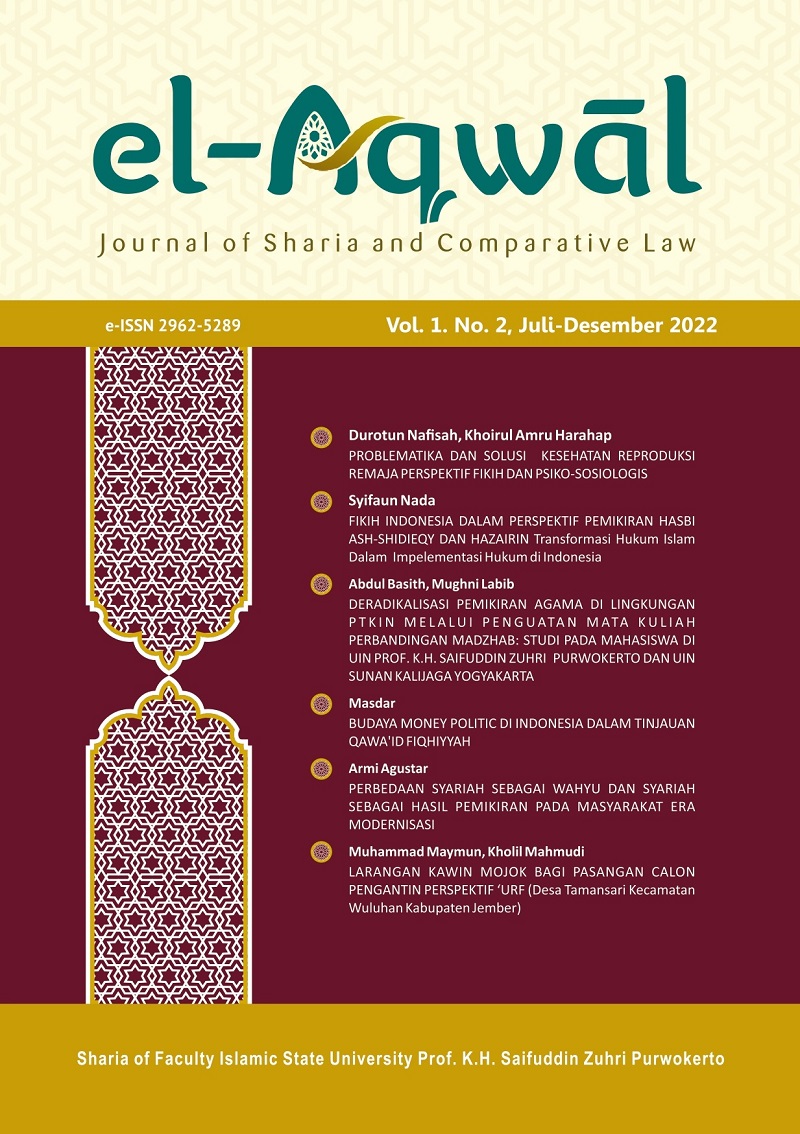Fikih Indonesia dalam Perspektif Pemikiran Hasbi Ash-Shidieqy dan Hazairin
Transformasi Hukum Islam Dalam Impelementasi Hukum di Indonesia
DOI:
https://doi.org/10.24090/el-aqwal.v1i2.6935Keywords:
Indonesian Jurisprudence, Hasbi Ash-Shidieqy, HazairinAbstract
Ash-Shiddieqy’s introduction of the term Indonesian fiqh was a compromise between Indonesian nationalism and Muslim reformism. By making Indonesian customs one of the sources of Indonesian fiqh. His conceptualization of “Indonesian fiqh”, through his immersion in classical Arabic texts and the writings of later reformers from the Middle East, and Hazairin’s emphasis on the role of particular cultural circumstances in shaping the Islamic content of Indonesian law, both show a comparable comparison. initiatives in the 1980s and 1990s. All of these writing initiatives continue to be the backdrop for legal discussion and debate among Indonesian Muslim intellectuals in the early twenty-first century. Indonesian fiqh can be interpreted as a concept of fiqh that is more locally based in Indonesia. Hasbi As-Shiddiqi and Hazairin are the two figures who initiated the Indonesian model of Fiqh, in addition to other scholars. Hasbi Hasbi was one of the reformers who offered his ideas comprehensively, starting from his concept of “Indonesian Jurisprudence”, to legal reform that includes both principles and methods. Meanwhile, Hazairin proposed the development of a new inheritance system which was interpreted and elaborated based on the scriptural perception of the Qur’an and Sunnah that it was not a patrilineal system, but a bilateral one, namely the family modelDownloads
Downloads
Published
How to Cite
Issue
Section
License
Copyright (c) 2022 El-Aqwal : Journal of Sharia and Comparative Law

This work is licensed under a Creative Commons Attribution-ShareAlike 4.0 International License.
Authors who publish with this journal agree to the following terms: Authors retain copyright and grant the journal right of first publication with the work simultaneously licensed under a Creative Commons Attribution-ShareAlike 4.0 International License that allows others to share the work with an acknowledgment of the work's authorship and initial publication in this journal.












